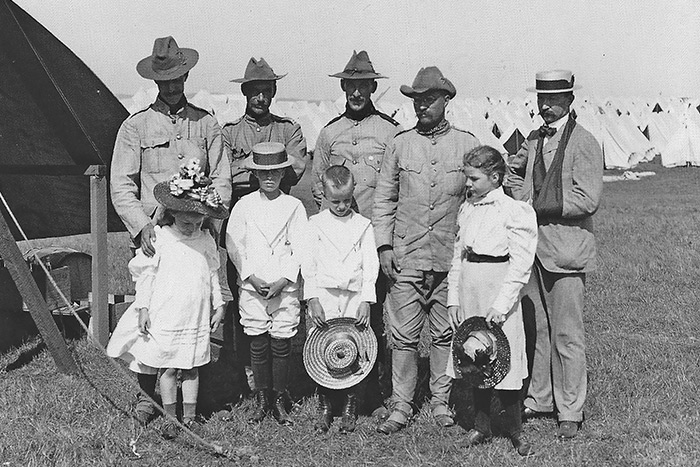Epidemic Halted in Montauk: How an Outbreak Was Stopped at The End

There’s been a lot in the news, as we deal with the coronavirus, about another pandemic that raged across this planet. The Spanish flu hit the civilized world in 1918, and many died before it was over.
Little mentioned is an earlier medical situation that involved Theodore Roosevelt and could have threatened to grow into a pandemic in 1898. Montauk played a key role in the effort to thwart it. And where the federal government and numerous cities botched the one in 1918, this earlier one was successfully snuffed out before it could get going.
In 1898, the United States fought a war with Spain and defeated them. The Philippines was taken. Cuba was taken. In both cases, American forces threw out the Spanish rulers and set the people of those places on the road toward freedom.
A big problem loomed in the hills of Cuba, however. The American Army, a force of more than 20,000 men, had joined with Cuban soldiers and swept the Spanish army back into the port town of Santiago, where the Spanish general was to eventually turn over his sword and surrender.
But while the Spanish held out in Santiago, most of the American army awaited the final outcome in the hills overlooking that city, not in triumph but in terrible trouble. An alarming number of them had become sick with tropical diseases, notably typhoid fever and malaria.
Soon after the surrender, the troops would have to be transported home. Parades and celebrations awaited them in the towns and cities of America—this was America’s first foray onto the international stage—and therein lay a problem.
President McKinley was informed that if these men were to be immediately discharged from the army, a disastrous epidemic of tropical diseases could sweep the nation. The president made a hard but necessary decision. The entire American army was to be first transported to some uninhabited place in the American landscape where the men could either recover or die—there were no medicines to cure these diseases then—after which the survivors could be sent on their way to the celebrations and parades.
Montauk, New York, fit the bill perfectly. Two years earlier, a wealthy railroad baron had laid trackage from New York City to Fort Pond Bay in Montauk in the belief that a freighter port could be constructed there. Freight from abroad could reach New York City by rail almost a day faster than by ship. At that time, the Narrows between Staten Island and Brooklyn often was so shallow at low tide that freighters had to wait, sometimes as much as 12 hours, for high tide, before they could sail through.
The Port at Montauk failed, however. And so, by 1898, the trackage was just a fast way to nowhere.
Thousands of white tents soon were erected in neat little rows throughout Montauk’s barren landscape in July. Larger tents were built to serve as hospitals for the doctors, nurses and volunteers who came to help. In mid-August, the troop ships arrived one by one at the large pier that stuck out into Fort Pond Bay. And the men walked off, or got carried off on stretchers, or got assisted, stumbling off, by fellow soldiers holding them up.
Teddy Roosevelt, who had created and commanded the Rough Riders charging up San Juan Hill in Cuba to send the Spanish running, was among them, and a national hero. And he had not gotten sick.
Roosevelt was assigned a tent among those of his Rough Riders near where Ditch Plains is today. President McKinley visited Roosevelt there. Photos of the two together were distributed to the press.
Conditions at the camp were poor in the early going for the troops. In the end, almost all of them, amid all of the sunshine that shone down, the ocean salt sea breezes that swept through the hills and grasslands of Montauk during that summer, and the care they got in those lying in hospital tents, recovered. Three hundred fifty-seven died here.
In mid-September, the Army officially mustered out the soldiers in Montauk and gave them free passage home.
Just over 20 years ago, Suffolk County, then the owner of Montauk’s Third House and the several hundred acres surrounding it, decided to rename that property as Teddy Roosevelt County Park. Montauk was the location of the start of his rise to the presidency, after all.
But in 2014, the county dropped that name and rebranded the space Montauk County Park.
People objected. Teddy had been here. He was part of the town’s history. But the county said because Roosevelt was only in Montauk as part of a military isolation program designed to avert an epidemic or pandemic, it wasn’t reason enough to honor him with a park.
Montauk County Park retains its name today.










